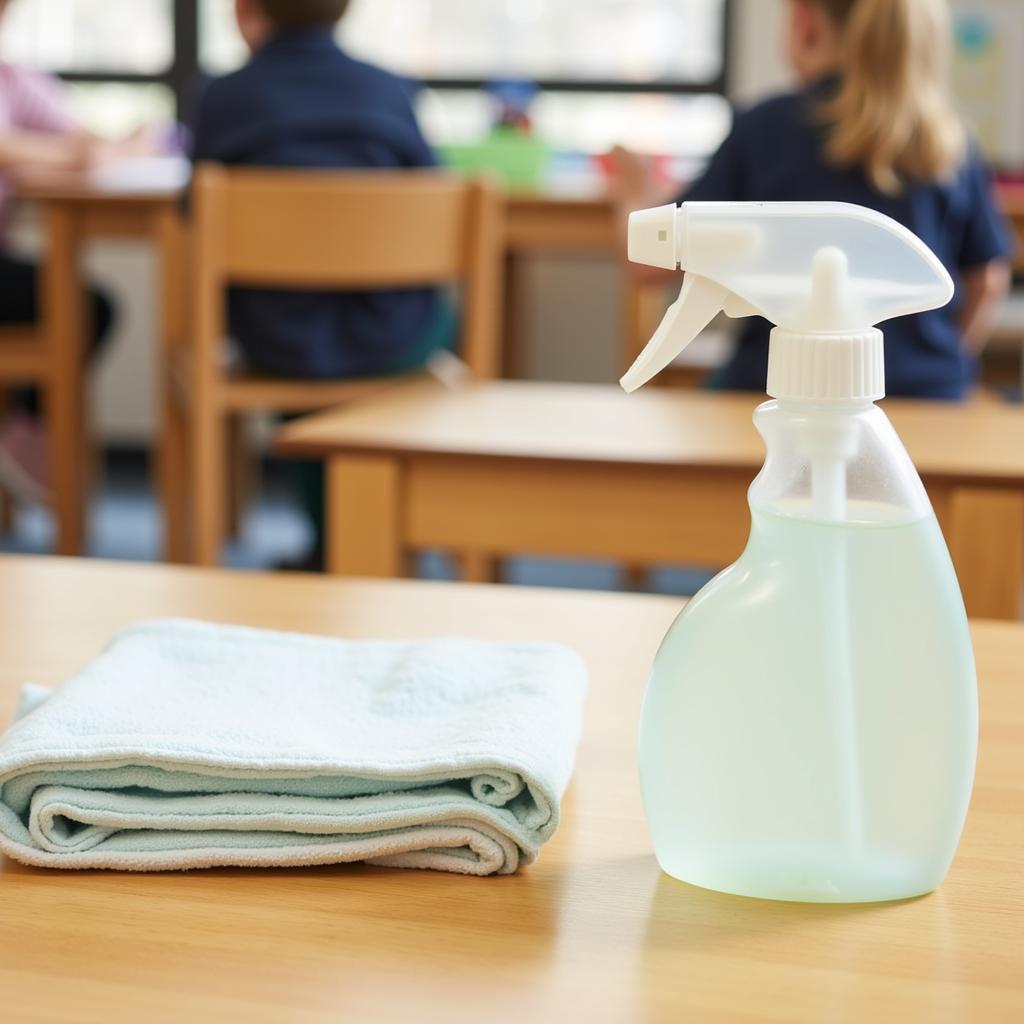Vietnamese people have a saying, “Water off a duck’s back,” implying futility. However, in preschool, spilled water becomes an opportunity for children to learn how to clean up – a small lesson with significant meaning. Cleaning spills on preschool tables is more than just maintaining hygiene; it’s a process of teaching life skills and fostering independence in young children. Immediately after a spill, teachers guide children on how to clean it up. This helps them understand the consequences of their actions and learn to take responsibility. chứng chỉ sư phạm mầm non tại bình dương (Preschool Teacher Certification in Binh Duong) strongly emphasizes training teachers in this skill.
The Significance of Cleaning Spills in Preschool
Cleaning spills on preschool tables may seem simple, but it carries profound educational significance. It helps children develop independence, responsibility, cleaning skills, and awareness of general hygiene. Ms. Nguyen Thi Lan, a preschool education expert in Hanoi, in her book “Raising Independent Children,” also emphasizes the importance of involving children in self-service activities like wiping tables and tidying toys. According to Ms. Lan, this is the best way for children to learn to take care of themselves and be aware of their responsibilities.
Fostering Independence in Children
When children clean up spills themselves, they feel proud of themselves and gradually develop self-discipline. This is crucial for their overall development. Moreover, the seemingly small act of wiping the table helps children develop small muscle groups in their hands, supporting their pencil grip and drawing skills later on.
 Cleaning supplies: a cloth and a bottle of hand sanitizer
Cleaning supplies: a cloth and a bottle of hand sanitizer
Guiding Children to Clean Spills Correctly
So, how do you guide children to clean spills on the table correctly and effectively? First, prepare a clean, dry cloth. Then, instruct the child to fold the cloth into a small square or rectangle. Next, gently wipe the spill on the table. The teacher can demonstrate for the children before letting them do it themselves. The most important thing is to always encourage and motivate children; even if they don’t do well, they should not be scolded. giáo trình giáo dục thẩm mỹ cho trẻ mầm non (Aesthetic Education Curriculum for Preschool Children) also mentions integrating hygiene awareness education into aesthetic activities.
Hygiene and Safety During Spill Cleanup
In addition to cleaning up the spill, attention should be paid to hygiene and safety. If the spilled liquid contains food, it should be cleaned up immediately to avoid attracting insects. For stubborn stains, diluted dish soap can be used, then wiped again with a clean cloth. vệ sinh an toàn thực phẩm cho trẻ mầm non (Food Hygiene and Safety for Preschool Children) is an important topic to be concerned about in the preschool environment.
I remember once a little boy in my class, named Bin, was very clumsy. He often spilled water. But after a period of patient guidance from the teacher, Bin improved a lot. Not only did he know how to clean up when he spilled water, but he also reminded other friends to maintain general hygiene. It’s true that “Constant dripping wears away the stone.”
Conclusion
Cleaning spills on preschool tables is a small lesson but contains great value. It not only helps children form good hygiene habits but also cultivates independence, responsibility, and essential life skills. cách rửa mặt cho trẻ mầm non (How to Wash a Preschooler’s Face) is also an important skill to teach children. Let’s join hands to create a clean, safe, and friendly preschool environment for our beloved children. Do you have any other questions about caring for and educating preschoolers? Please leave a comment below or contact us at 0372999999 or visit us at 234 Hao Nam, Hanoi. We have a 24/7 customer care team. Don’t forget to share this article if you find it helpful!